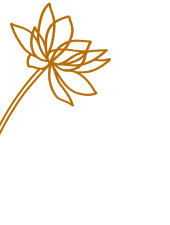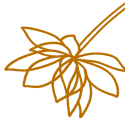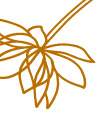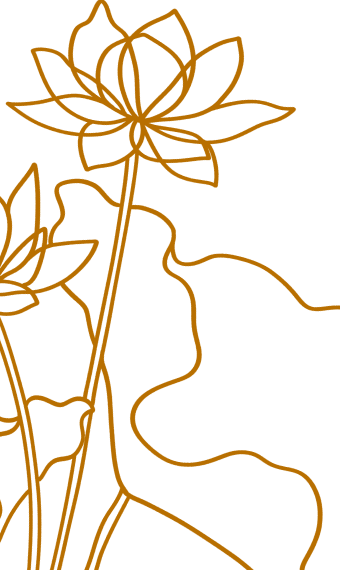
Overview of Tet (Tet Vietnam) Tet Nguyen Dan, commonly known as Tet, is Vietnam’s most significant and eagerly awaited holiday. As the Lunar New Year approaches, the air fills with anticipation, and the streets become vibrant with colors and activity. Tet is more than just a New Year celebration; it is a time for honoring traditions, reuniting with family, and welcoming prosperity for the coming year. From the food prepared in homes to the festivals in the streets, Tet is deeply rooted in Vietnamese culture and offers a unique glimpse into the country’s heritage.
1. The Meaning of Tet in Vietnamese Culture: Tet is a holiday of profound cultural importance. Marking the beginning of the lunar calendar, Tet is seen as a time to reflect on the past year and look forward to the new one with hope. For many, it represents a spiritual cleansing, where bad luck and misfortunes are left behind, and a fresh start is embraced. The celebrations are linked to traditional beliefs in paying respect to ancestors, seeking blessings, and ensuring a prosperous year ahead. This sacred time brings with it customs passed down through generations. For instance, many Vietnamese families take part in rituals at home or visit temples to offer prayers. These moments of reflection, surrounded by the warmth of family, encapsulate Tet’s heart.

2. Preparations for Tet: A Busy Time in Vietnamese Homes
The preparations leading up to Tet are almost as necessary as the holiday. In the weeks before the Lunar New Year, Vietnamese families clean their homes from top to bottom. This act of cleaning is not just about tidying up; it symbolizes removing any lingering bad luck from the previous year. Once the house is spotless, it is decorated with symbolic items like flowers and red banners, representing good fortune and happiness. Flower markets become the focal point of many cities, with vibrant displays of hoa mai (yellow apricot flowers) and hoa dao (peach blossoms), two essential decorations for Tet. These flowers are carefully chosen, symbolizing spring, vitality, and new beginnings. Another popular decoration is the kumquat tree, often placed in homes as a symbol of wealth and good fortune.
Beyond the decor, the streets and markets are filled with the hustle and bustle of people shopping for Tet essentials. Vendors sell everything from festive clothing to offerings for ancestors and ingredients for the most critical part of Tet—Vietnamese food.
3. The Culinary Traditions of Tet
Food plays a central role in Tet celebrations, and families take pride in preparing traditional dishes with symbolic meanings. Tet meals are not only about eating; they are about bringing family together to share in abundance and to ensure that the year ahead will be prosperous. Perhaps the most iconic Tet dish is banh chung in the north and banh tet in the south. These sticky rice cakes are essential to every Tet table. Banh Chung is square-shaped, symbolizing the Earth, while banh tet is cylindrical, representing the sky. Both are filled with savoury mung beans and pork, wrapped in green leaves, and perfectly cooked over many hours. Making these cakes is often a family affair, with members coming together to prepare, wrap, and cook the cakes—a tradition that has been cherished for generations.
Another popular dish during Tet is thit kho trung, a braised pork belly and egg dish especially popular in southern Vietnam. The rich, savoury flavour of the pork, braised in coconut water, pairs beautifully with rice and makes for a comforting meal. The dish is often associated with family togetherness and is abundant during the Tet holidays. Tet would not be complete without mut tet, a variety of candied fruits served to guests during the holiday. Made from kumquats, coconut, ginger, and other fruits, these sweets symbolize prosperity and are enjoyed with tea during family gatherings. Xoi, sticky rice, is another staple, often prepared with a variety of toppings such as mung beans or shredded chicken, and it represents the importance of rice in Vietnamese culture.
These traditional foods are not only delicious but also rich in meaning. Every bite of a Tet dish tells a story, connecting the present with the past, and each flavor reminds us of the cultural values deeply embedded in Vietnamese traditions.

4. Family, Ancestors, and Spiritual Practices
Tet is a time to honor ancestors, and this is one of the most critical aspects of the holiday. In Vietnamese culture, ancestral worship plays a crucial role, and Tet offers a unique opportunity to reconnect with the spirits of family members who have passed away. In every home, altars are carefully prepared with offerings of food, flowers, and incense, inviting ancestors to join the celebration and bless the family. Families gather to make these offerings on the eve of Tet, often lighting incense and praying for protection and good fortune in the year ahead. This practice is a spiritual tradition and a way to strengthen family bonds, as the act of honoring ancestors is shared across generations.
An exciting tradition before Tet is the celebration of Tao Quan or the Kitchen Gods. A week before Tet, families perform a ritual to send the Kitchen Gods back to heaven, where they will report on the household’s activities for the past year. This ceremony usually involves the symbolic release of carp into rivers or lakes, as it is believed that the carp will carry the gods to heaven.
Family is at the center of all Tet activities. The first day of Tet, Mung 1, is reserved for immediate family. It’s a day of joy, with everyone wearing new clothes and exchanging wishes for the coming year. Elders are particularly respected during Tet, and it is common for younger family members to visit and offer their best wishes to grandparents and parents.

5. Tet Festivals and Community Spirit
Tet is not only celebrated at home but also in the community. Cities across Vietnam come alive with festivals, parades, and fireworks displays. In larger cities like Hanoi and Ho Chi Minh City, the streets are decorated with lights and flowers, and public spaces become gathering points for families and friends to enjoy the festive atmosphere. Lion and dragon dances are also common during Tet, as they are believed to chase away evil spirits and bring good fortune. The lively sound of drums and gongs fills the air as dancers move through the streets, creating an unforgettable experience for those who witness these traditional performances.
Games are another popular Tet tradition, with folk games such as bau cua ca cop being played in homes and community centers. These games, often involving small bets, add a fun and competitive element to the holiday, and people of all ages enjoy them.
6. Tet Around the World
For the Vietnamese diaspora, celebrating Tet abroad is crucial to staying connected to their heritage. Vietnamese communities in countries like Canada, the United States, and Australia organize Tet festivals that mirror the celebrations back home. These festivals feature traditional food, performances, and rituals, allowing families to celebrate even if they are far from their homeland. In recent years, Tet has gained recognition beyond the Vietnamese community. Many non-Vietnamese people join in the festivities, participating in events, enjoying Vietnamese food, and learning about the cultural significance of Tet. This growing global recognition is a testament to Vietnam’s rich and diverse cultural heritage.

7. Why Tet Matters Today
Tet has remained an essential part of Vietnamese culture, even in modern times. While some aspects of the holiday have evolved, the core values of family, renewal, and respect for tradition have endured. Tet is more than just a celebration; it is a time for reflection, gratitude, and hope for the future. For those who have the chance to experience Tet, whether in Vietnam or abroad, it offers a unique opportunity to witness the vibrancy of Vietnamese culture, savour the delicious foods, and partake in time-honoured traditions. Tet is a celebration that invites everyone, no matter where they are, to embrace the spirit of renewal and prosperity.





